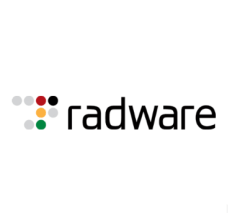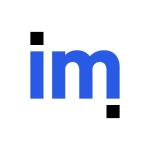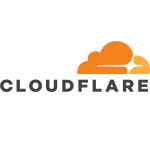The bank has benefited from improved security and visibility. Two months ago, there was scouting at a national level in Bolivia from Brazil, and it was difficult to find. Cloud WAF gave us that visibility, and as soon as we had a bit of suspicion, we started to block things, mostly traffic. That has benefited us a lot, especially in having more peace of mind and visibility of events and possible attacks.
The network team started with RadWare Alteon, and after that, they began to consider WAF and Cloud WaF. After a month of putting together infrastructure and having clarity, we have already begun to notice the benefit of visibility.
We do have greater visibility of false positives, but we understand that RadWare cannot make the change. It depends more on internal processes to validate false positives. It does provide support by detecting them, and then we need to coordinate internally. For example, we noticed many false positives in SQL injection—around 60 to 70 percent of the false positives were there—so we already have a basis for mitigating them in other channels.
Cloud WAF has freed up our IT staff's time, saving us around 40 percent. For example, because we have visibility on the network level, we do not have to figure things out. If an event occurs in some SIEM or an attack occurs, we can act quickly to prevent the attack and loss of information or economic impact.
From my side, it is a little easier to automatically see these events, show the teams, and coordinate this whole issue rather than spending time investigating, checking logs, and seeing those types of elements on servers, in the DMZ, or in the same application.
I like that Cloud WAF provides me with lots of information. All the events and all the possible attacks appear in front of you, and false positives appear through different channels. The solution's automated analytics are excellent. I have several events that appear automatically.
The blocking part seems good. Since I'm just starting on the team, I don't know much about the tool. I'm discovering all its features right now, and they showed me some video tutorials.
We haven't seen any issues with integrating Cloud WAF at the same level of product. For example, we haven't had any problems integrating it with Alteon. I don't have direct experience integrating it with firewalls or other tools, but based on what others are saying, there haven't been any compatibility issues with other applications the bank uses.
I rate Radware Cloud WAF eight out of 10. The interface could be a little more detailed. It would be great if Cloud WAF could provide us with alternative solutions to pass along to the developers, infrastructure, security, and all the teams involved in critical events. For example, you have no alternatives if you have a crisis that can be attended to this week or in the next two weeks. You can only block it or not, making things a bit more complicated.
I don't know the tool well yet, but from what I have seen it could be improved by simplifying the team coordination. Also, the categorization could be better because there are only four or five categories: injection, vulnerabilities, etc. If we had more details and options it would benefit us a lot.
I recommend future users learn a little about the tool before using it and have training. It is extensive, so it's critical to know about the events. This tool opened my eyes. We were not covered through all the protocols, we weren’t really safe, this tool gave me a much-needed security.
Foreign Language: (Spanish)
Nos beneficiamos de una mayor seguridad y visibilidad.
¿Cuánto tiempo lleva usando esta solución?
He estado usando RadWare Cloud WAF durante aproximadamente dos o tres meses.
¿Cuál es su principal caso de uso de esta solución? (Incluya detalles sobre su entorno).
El banco utiliza diferentes canales, como banca móvil, banca por Internet y Credinet, adoptamos Cloud WAF para evitar bloqueos y ataques. Hemos pasado la etapa de revisión de políticas y estamos listos para comenzar a bloquear. En este momento, estamos en modo de informe y nos dirigimos a la etapa de bloqueo.
Comparta cómo Radware Cloud WAF Service ha mejorado su organización. Si no fue así, explique por qué.
El banco se ha beneficiado de una mayor seguridad y visibilidad. Hace dos meses hubo scouting a nivel nacional en Bolivia desde Brasil y fue difícil de encontrar. Cloud WAF nos dio esa visibilidad y tan pronto como tuvimos un poco de sospecha, comenzamos a bloquear cosas, principalmente tráfico. Eso nos ha beneficiado mucho, sobre todo en tener más tranquilidad y visibilidad de eventos y posibles ataques.
El equipo de redes comenzó con RadWare Alteon y después de eso, comenzaron a considerar WAF y Cloud WaF. Después de un mes de armar la infraestructura y tener claridad, comenzamos a notar el beneficio de la visibilidad.
Tenemos una mayor visibilidad de los falsos positivos, pero entendemos que el cambio no depende de RadWare. Depende más de procesos internos para validar los falsos positivos. Brinda apoyo al detectarlos y luego necesitamos coordinarnos internamente. Por ejemplo, notamos muchos falsos positivos en la inyección SQL (alrededor del 60 al 70 por ciento de los falsos positivos estaban allí), por lo que ya tenemos una base para mitigarlos en otros canales.
Cloud WAF ha liberado tiempo de nuestro personal de TI, ahorrándonos alrededor del 40 por ciento. Por ejemplo, como tenemos visibilidad a nivel de red, no tenemos que resolver las cosas desde cero. Si ocurre algún evento en algún SIEM o se produce un ataque, podemos actuar rápidamente para evitar el ataque y la pérdida de información o impacto económico.
Por mi parte, es un poco más fácil ver estos eventos de manera automatizada, mostrarselos a los equipos y coordinar todo este asunto en lugar de perder tiempo investigando, revisando registros y buscando ese tipo de elementos en los servidores, en la DMZ o en la misma aplicación.
¿Qué características le han parecido más valiosas y por qué?
Me gusta que Cloud WAF me proporciona mucha información. Todos los eventos y todos los posibles ataques aparecen frente a ti, y aparecen falsos positivos a través de diferentes canales. Los análisis automatizados de la solución son excelentes. Tengo varios eventos que aparecen automáticamente.
La parte del bloqueo me parece buena. Como recién estoy comenzando en el equipo, no sé mucho sobre la herramienta. Estoy descubriendo todas sus características ahora mismo y me mostraron algunos videotutoriales.
No hemos visto ningún problema con la integración de Cloud WAF con otras soluciones de RadWare. Por ejemplo, no hemos tenido ningún problema para integrarlo con Alteon. No tengo experiencia directa en su integración con firewalls u otras herramientas, pero según lo que dicen otros, no ha habido ningún problema de compatibilidad con otras aplicaciones que utiliza el banco.
¿En qué áreas se podría mejorar el producto o servicio?
¿Qué características adicionales deberían incluirse en la próxima versión?
El portal de gestión de Cloud WAF carece de muchos indicadores y la interfaz podría ser más fácil de usar. Debería proporcionar información más detallada sobre los eventos, las posibles soluciones y lo que significa cada evento. Si te brinda la parte de evento y bloqueo, pero no te brinda una solución. Por ejemplo, si alguien quiere realizar una inyección SQL y encontrar una posible solución distinta a la parte de bloqueo, no puede ya que no existen detalles. Sería bueno tener posibles soluciones o la capacidad de crear un informe automatizado para enviarlo a los desarrolladores en el portal.
Además, deberían ofrecer más videos tutoriales en español. Sólo hay un tutorial en español, lo cual es difícil para nosotros como clientes latinoamericanos.
Alternativas y consejos:
¿Utilizó anteriormente una solución diferente? De ser así, ¿por qué la cambió?
Antes de elegir, ¿evaluaste otras opciones? ¿De ser asi, cuales?
¿Tiene algún comentario o consejo adicional sobre esta solución?
Califico a Radware Cloud WAF con ocho sobre 10. La interfaz podría ser un poco más detallada. Sería fantástico si Cloud WAF pudiera brindarnos soluciones alternativas para transmitirlas a los desarrolladores, la infraestructura, la seguridad y todos los equipos involucrados en eventos críticos. Por ejemplo, no tienes alternativas si tienes una crisis que puede ser atendida esta semana o en las próximas dos semanas. Sólo tienes dos opciones: bloquear o no bloquear, lo que complica un poco las cosas.
Aún no conozco bien la herramienta, pero por lo que he visto se podría mejorar simplificando la coordinación del equipo. Además la categorización podría ser mejor porque solo hay cuatro o cinco categorías: inyección, vulnerabilidades, etc. Si tuviéramos más detalles y opciones nos beneficiaría mucho.
Recomiendo a futuros usuarios conocer un poco la herramienta antes de utilizarla y capacitarse. Es extensa, por lo que es fundamental conocer los eventos. Esta herramienta me abrió los ojos. No estábamos cubiertos ante todos los protocolos, no estábamos realmente seguros, esta herramienta nos brindó una seguridad muy necesaria.
Rendimiento
¿Cuáles son sus impresiones sobre la escalabilidad de esta solución?
Apenas estamos empezando a descubrir el potencial de Cloud WAF, pero ya queremos aumentar su uso en nuestra empresa.
¿Cuáles son sus impresiones sobre la estabilidad de esta solución?
Cloud WAF es muy estable. No hemos tenido ningún problema a nivel de portal, herramienta o servicio.
¿Cuál es su retorno de la inversión?
El mayor retorno de la inversión es la mejora en seguridad y el poder evitar pérdidas de información o ataques DDoS. Ganamos seguridad y la certeza de que siempre estaremos operativos. Se ha reducido el número de ataques, aquí existe un área de contingencia que mide los indicadores, incluyendo el TCO. Es difícil saberlo, pero parece que se ha reducido aproximadamente entre el 30 y el 40 por ciento.
Configuración y soporte
¿Lo implementó a través de un equipo de proveedores o uno interno? Si se trata de un equipo de proveedores, ¿cómo calificaría su nivel de experiencia?
Cuéntanos tu experiencia con el servicio de soporte al cliente.
Califico el soporte de Radware con ocho de 10. He visto mucha disposición de su parte para ayudarnos, pero es necesario abrir el ticket y buscar los detalles en inglés, y la mayor parte del soporte es en inglés, a veces explicar el problema es un reto.
¿Cómo calificaría esta solución en una escala del 1 al 10 en cuanto al servicio de soporte?
8.













